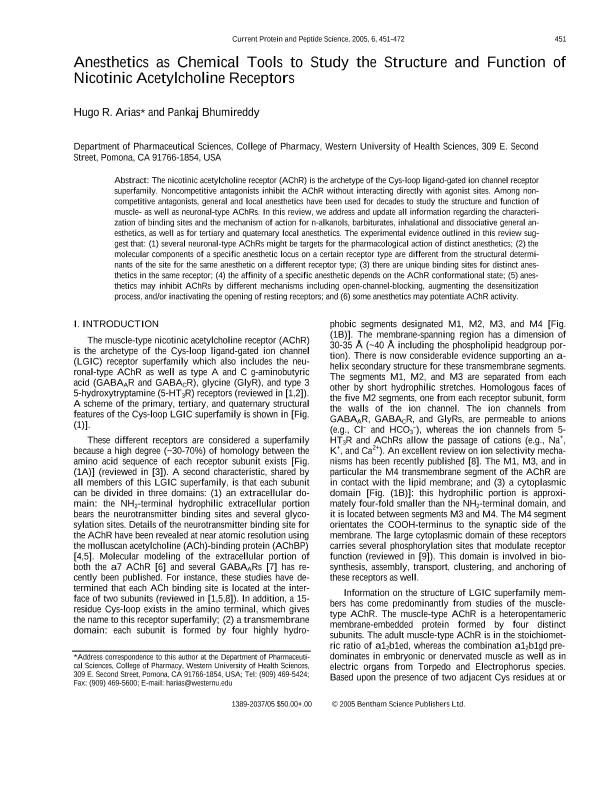Artículo
Anesthetics as chemical tools to study the structure and function of nicotinic acetylcholine receptors
Fecha de publicación:
10/2005
Editorial:
Bentham Science Publishers
Revista:
Current Protein and Peptide Science
ISSN:
1389-2037
Idioma:
Inglés
Tipo de recurso:
Artículo publicado
Clasificación temática:
Resumen
The nicotinic acetylcholine receptor (AChR) is the archetype of the Cys-loop ligand-gated ion channel'receptor superfamily. Noncompetitive antagonists inhibit the AChR without interacting directly with agonist sites. Among non-competitive antagonists, general and local anesthetics have been used for decades to study the structure and function of muscle- as well as neurorial-type AChRs. In this review, we address and update all information regarding the characterization of binding sites and the mechanism of action for n-alkanols, barbiturates, inhalational and dissociative general anesthetics, as well as for tertiary and quaternary local anesthetics. The experimental evidence outlined in this review suggest that: (1) several neuronal-type AChRs might be targets for the pharmacological action of distinct anesthetics; (2) the molecular components of a specific anesthetic locus on a certain receptor type are different from the structural determinants of the site for the same anesthetic on a different receptor type; (3) there are unique binding sites for distinct anesthetics in the same receptor; (4) the affinity of a specific anesthetic depends on the AChR conformational state; (5) anesthetics may inhibit AChRs by different mechanisms including open-channel-blocking, augmenting the desensitization process, and/or inactivating the opening of resting receptors; and (6) some anesthetics may potentiate AChR activity.
Archivos asociados
Licencia
Identificadores
Colecciones
Articulos(INMABB)
Articulos de INST.DE MATEMATICA BAHIA BLANCA (I)
Articulos de INST.DE MATEMATICA BAHIA BLANCA (I)
Citación
Arias, Hugo Rubén; Bhumireddy, Pankaj; Anesthetics as chemical tools to study the structure and function of nicotinic acetylcholine receptors; Bentham Science Publishers; Current Protein and Peptide Science; 6; 5; 10-2005; 451-472
Compartir
Altmétricas




